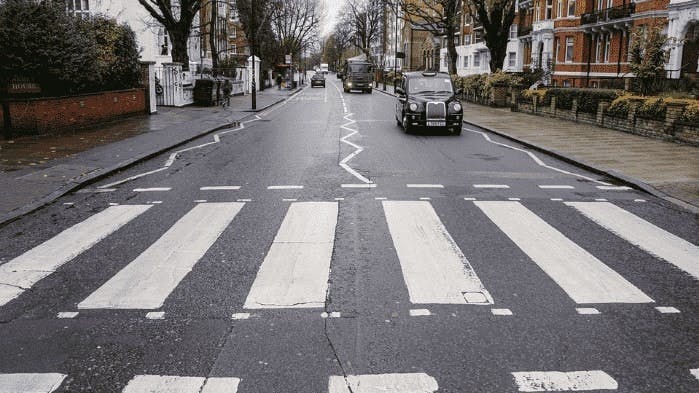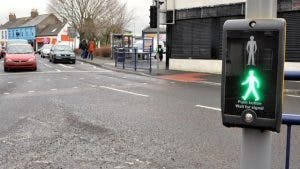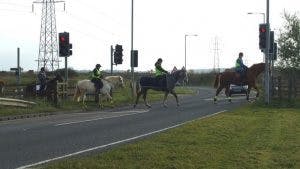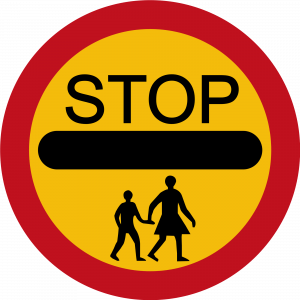Maybe you’ve noticed, but not all road crossings are created equal. They differ in terms of symbols, rules and even noises. There are 5 main types of pedestrian crossing, with a couple of extra variations to consider. The main ones are named after animals—because we’re fun like that in the UK!
If you’re learning to drive or looking to refresh your knowledge of the road, make sure you get to grips with the following crossings...
1. Zebra

Named because of the stripes on the road that distinguish them from other crossings, zebras give priority to pedestrians. You can also spot them from afar by their flashing yellow Belisha beacons. The approach to the crossing (as is the case with most) is marked by white zigzag lines.
As a driver:
- You must give way to pedestrians that are on the crossing.
- Keep your eyes peeled for people approaching the crossing.
- Do not, under any circumstances, park on the zigzag lines.
As a pedestrian:
- Watch traffic and try to make sure drivers have seen you.
- Stick to the crossing, do not go beyond the striped lines.
- Be aware that in wet weather, vehicles will take longer to come to a stop.
2. Pelican
Pelican crossings come with all the extras: lights, activation buttons, sounds (oh my!). The name is a shortened version of Pedestrian Light Indication. By pressing the button at the side of the road, pedestrians control the flow of traffic. Unlike other crossings, the red light will be followed by a flashing amber light. Pelicans are the OG of traffic light crossings, with the red and green men positioned next to the lights on the opposite side of the road.
As a driver:
- Take notice of traffic lights coming up as soon as possible.
- Watch out for pedestrians crossing before the green man has appeared.
- Be aware that some people may struggle to get across the road in the time the red light allows. If the amber light is flashing and pedestrians are still crossing, you should give way to them before setting off.
As a pedestrian:
- Wait for the green man before you cross, don’t chance it.
- Be prepared for some cars to sneak across even when the lights have turned red.
- Don’t dawdle in the middle of the road, make your way across as quickly and efficiently as possible.
3. Puffin

A slightly smarter version of the pelican crossing, puffin is short for Pedestrian User Friendly Intelligent crossings (doesn’t exactly roll off the tongue, does it?). Not only do these crossings have activation buttons, they are also equipped with sensors that detect when pedestrians are present. The green and red man symbols are positioned at the side of the crossing, rather than on the opposite side of the road.
As a driver:
- Follow tips given for pelican crossings. However, thanks to the sensors, usually the lights will not change until pedestrians have made it safely across the road.
As a pedestrian:
- Look for the green man symbol on your side of the road—it will be positioned above the activation button.
4. Toucan
These are like puffin crossings, but they serve pedestrians and cyclists. They are noticeably wider than pelican and puffin crossings in order to accommodate bikes (because here, ‘two-can’ cross). As you would expect, these crossings are commonly found near parks and cycle lanes.
As a driver:
- Although necessary at all crossings, it is particularly important on toucans to stop before the white line to make room for cyclists and pedestrians (be aware that on any crossing, stopping after the stop line can result in a fail on your driving test).
- Be on the lookout for cyclists approaching the crossing, as they move faster than pedestrians and may try to cross at the last minute.
As a pedestrian:
- Stick to your part of the crossing, to allow room for cyclists.
5. Pegasus (or Equestrian)

Pegasus crossings are designed to allow horses to cross the road, as well as pedestrians and/or cyclists. Buttons are usually located slightly higher up than on normal lights, to make it easier for riders to reach them.
As a driver:
- Avoid revving your engine or moving off suddenly as this may startle the horses.
- Be aware that horses may be positioned very close to the road, so leave plenty of room.
As a pedestrian:
- Do not stand behind the horses or make any sudden movements/loud noises—horses are easily spooked.
Other Variations to Consider

School Patrol Crossing
During school hours (anytime between 8am and 5:30pm) you might see a lollipop person manning a crossing. They may station themselves at a Zebra crossing, or indeed any part of a road that is a popular crossing point. These patrollers have the authority to stop any traffic, so you must act according to their signals.
Refuge Islands
This is the term given to the pavements that provide a place for pedestrians to stand in the middle of particularly large or busy roads. If crossings are staggered by islands, it’s safer to treat them as two separate crossings (especially if they are not directly in line with one another).
And, Finally...
The most important thing to remember at crossings, whether pedestrian or driver, is to always look and check both ways—people can be unpredictable. Furthermore, outside circumstances may cause behaviour that is not in accordance with the official rules. It takes a certain amount of instinct and common sense (which you'll pick up over time) to avoid car accidents. Understanding and following the rules of the road is a good place to start!
Subscribe for driving advice, offers & more
We'd love to let you know about our courses, news and offers via email. You may unsubscribe at any time.
Star Genie Limited trading as PassMeFast. Company number 10093359
Copyright © 2024 owned by Star Genie Limited
PassMeFast, Blue Tower, MediaCityUK, Salford, M50 2ST

